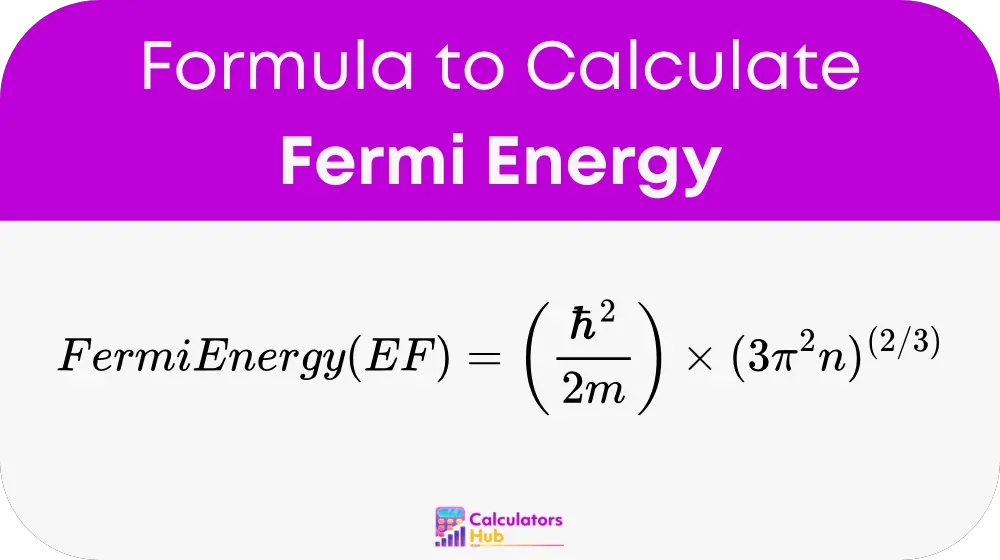The Fermi Energy Calculator determines the Fermi energy (EF) of a system of electrons, which is a key concept in quantum mechanics and solid-state physics. Fermi energy represents the highest energy level occupied by electrons at absolute zero temperature in a system of non-interacting fermions. It is crucial in analyzing the electrical and thermal properties of metals, semiconductors, and degenerate electron gases. Scientists and engineers use this calculator to assess how electrons behave in a material, which helps in designing electronic components and conducting research in nanotechnology and condensed matter physics.
formula of Fermi Energy Calculator

Where:
EF = Fermi energy in joules
ℏ = reduced Planck's constant = 1.0545718 × 10⁻³⁴ J·s
m = mass of an electron = 9.10938356 × 10⁻³¹ kg
n = electron number density in electrons per cubic meter
π = pi ≈ 3.14159
To convert EF from joules to electronvolts:
EF (eV) = EF (J) / q
Where:
q = elementary charge = 1.602176634 × 10⁻¹⁹ C
This formula assumes a uniform electron gas and is valid for three-dimensional, non-relativistic, degenerate Fermi systems.
Table of Common Values for Materials
| Material | Electron Density (n) (electrons/m³) | Fermi Energy (eV) |
|---|---|---|
| Copper (Cu) | 8.5 × 10²⁸ | ~7.0 |
| Silver (Ag) | 5.86 × 10²⁸ | ~5.5 |
| Sodium (Na) | 2.65 × 10²⁸ | ~3.2 |
| Gold (Au) | 5.9 × 10²⁸ | ~5.5 |
| Aluminum (Al) | 18.1 × 10²⁸ | ~11.6 |
These values are typical approximations based on empirical data and can vary slightly with temperature and purity.
Example of Fermi Energy Calculator
Scenario:
Calculate the Fermi energy of copper with an electron density of 8.5 × 10²⁸ electrons/m³.
Step 1:
EF = (1.0545718 × 10⁻³⁴)² / (2 × 9.10938356 × 10⁻³¹) × (3π² × 8.5 × 10²⁸)^(2/3)
Step 2:
EF ≈ 1.118 × 10⁻¹⁸ joules
Step 3:
Convert to eV:
EF (eV) = 1.118 × 10⁻¹⁸ / 1.602176634 × 10⁻¹⁹ ≈ 6.98 eV
So, the Fermi energy for copper is approximately 7.0 eV, which matches typical reference values.
Most Common FAQs
A: It helps describe electron distribution in solids and is used to understand conductivity, heat capacity, and the behavior of semiconductors and metals.
A: No, Fermi energy is always a positive value as it represents the energy of the highest occupied state at absolute zero.
A: No, it varies with electron density and material structure. Each substance has a unique electron configuration, affecting its Fermi energy.